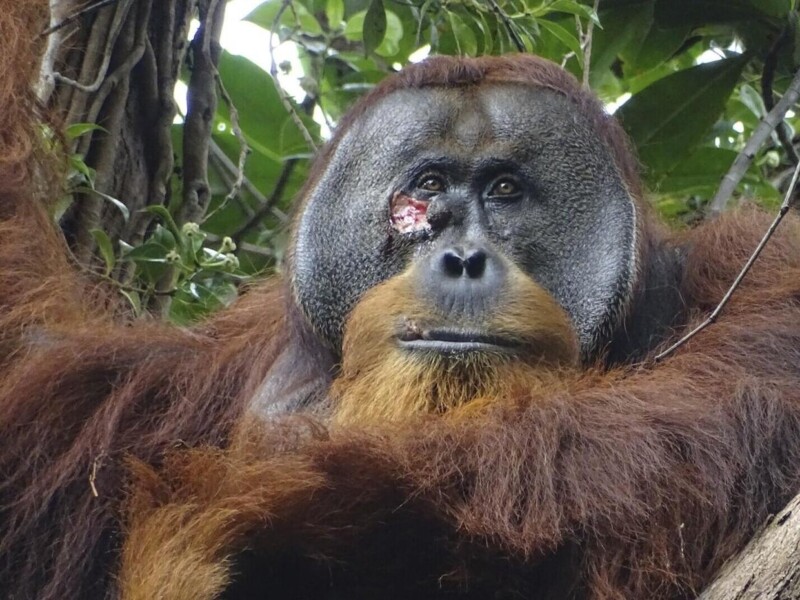Scientists Photograph Orangutan Treating Wound with Medicinal Plant in World-First Observation

Scientists photographed an orangutan treating a large wound on its cheek with a medicinal plant in world-first images.
Earlier this month, a research team reported that they observed a Sumatran orangutan who self-medicated using a paste made from plants to heal an injury on his cheek in Gunung Leuser National Park, Indonesia.


It is the first time a creature in the wild has been recorded and photographed treating an injury with a medicinal plant.
While the images were only released in a study published in Scientific reports this month, the incident took place in June 2022.
Two years ago, scientists spotted the Sumatran orangutan named Rakus with a large wound on his cheek.
The research team believes Rakus was wounded fighting with rival male orangutans because he made loud cries called “long calls” in the days before they saw the wound.
The team then saw Rakus chewing the stem and leaves of a plant called “Akar Kuning” — an anti-inflammatory and anti-bacterial plant that is also used locally to treat dysentery, malaria, and diabetes.
Rakus repeatedly applied the liquid to his cheek for seven minutes. Rakus then smeared the chewed leaves onto his wound until it was fully covered. He continued to feed on the plant for over 30 minutes.

After researchers saw Rakus applying the plant poultice to his face, the researchers saw no sign of infection and the wound closed within five days.
Within a month, the orangutan’s wound had fully closed up and healed. Photographs, taken by the scientists, show the animal’s wound closed within a month without any problems.
Previous research has documented several species of great apes foraging for medicines in forests to heal themselves.
In the 1960s, primatologist Jane Goodall saw whole leaves in the feces of chimpanzees, and others documented seeing great apes swallowing leaves with medicinal properties.
However, scientists have never seen a wild animal treat itself in this way and apply a plant to a wound. The team says that the findings could help shed light on how the knowledge of wound medications evolved in humans.
“They are our closest relatives and this again points towards the similarities we share with them. Dr. Isabella Laumer, a biologist at the Max Planck Institute in Germany and lead author of the research, tells the BBC.
“We are more similar than we are different.”